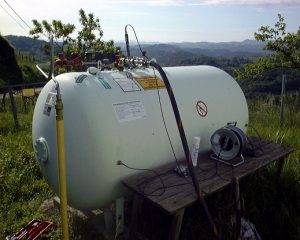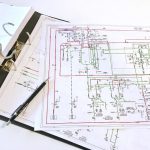 Integrity measurement by means of acoustic emission
Integrity measurement by means of acoustic emission
By means of an acoustic emission test with elevated pressure the integrity of your vessel is investigated. This acoustic emission test ensures 100% coverage and can be performed without the need to empty the vessel. In most cases this provides a full alternative for internal examination. The test has been standardized since many years:
- EN 13554 ‘general principles’
- EN 1330-9 ‘terminology’
- EN 134771-1 and EN 13771-2 ‘measuring equipment’
- EN 14584 ‘AT on pressure equipment – planar location’
- Annex C of EN 12817, EN 12819 ‘inspection of LPG tanks’
Acoustic emission is used to localize defects in a material. Materials, and steel in particular, send out pulses of acoustic waves once they are brought under stress. The acoustic waves are registered by means of a measuring channel consisting of sensors, pre-amplifier, cable and measuring device. Through calculations with 2, 3 or more sensors the source of acoustic emission is localized. Via post-analysis the found sources are classified into three categories according to their criticality.
Bottom vertical storage tank
The main purpose of an acoustic emission investigation on a tank bottom of an above ground storage tank is to determine leak tightness and corrosion activity. An acoustic emission measurement is performed while the tank remains filled and after it is brought to rest. The test has been standardized since many years:
- EN 13554 ‘general principles’
- EN 1330-9 ‘terminology’
- EN 134771-1 and EN 13771-2 ‘measuring equipment’
- EN 15856 ‘corrosion detection on storage tanks
 A source of acoustic emission (in this case active corrosion or an active leak) sends out ultrasonic waves that reach the different sensors after different travelling times. The propagation rate of the wave in the liquid together with the known locations of the sensors are needed to localize the source of the signal.
A source of acoustic emission (in this case active corrosion or an active leak) sends out ultrasonic waves that reach the different sensors after different travelling times. The propagation rate of the wave in the liquid together with the known locations of the sensors are needed to localize the source of the signal.







